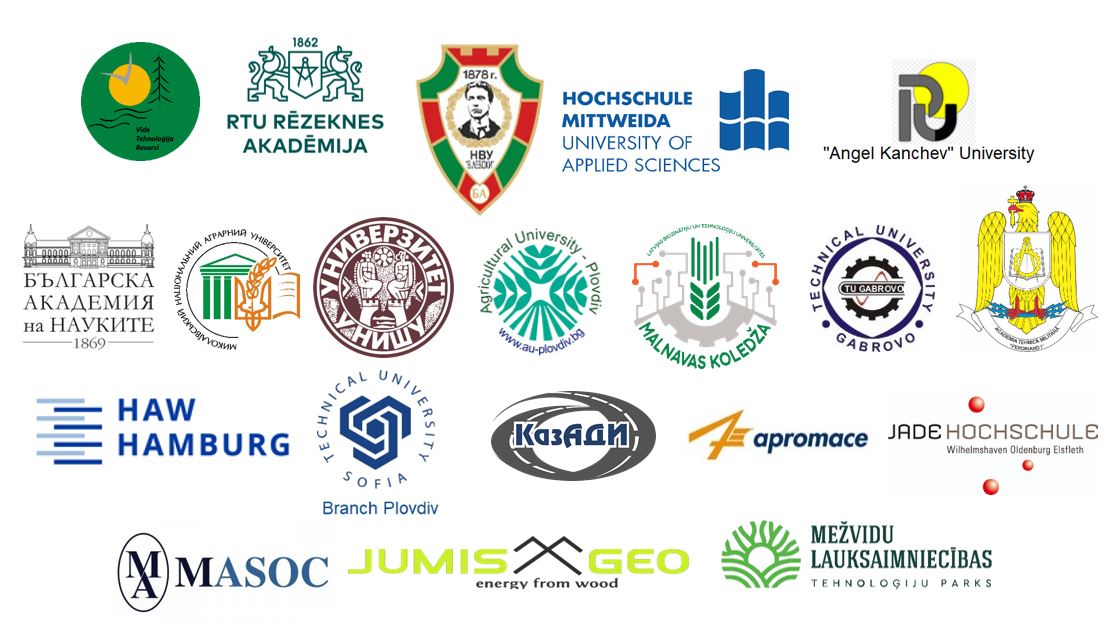ANALYSIS OF ASH CONTENT IN COMPOSITE BIOMASS FUELS
##manager.scheduler.building##: Atbrivosanas aleja 115, k-4 (Faculty of Engineering)
##manager.scheduler.room##: Room 112
Last modified: 01.06.2017
Abstract
Keywords
References
[1] Noviks G., Zorins A. (2011) National recomendation report. In: Joint European-Latin American Universities Renewable energy Project, Rēzeknes Augstskola Rēzekne, Latvija p.6-8.
[2] Čubars E. (2008) Lubānas ezera niedru resursu izvērtējums un to izmantošanas enerģijas ieguvei pamatojums/Zinātniskais darbs maģistra grāda ieguvei/ Rēzeknes Augstskola, Inženieru fakultāte. Zin.vad. Gotfrīds Noviks. Rēzekne, 70 lpp.
[3] Enerģētisko augu audzēšana un izmantošana (2007) Adamovičs A.,Agapovs J., Aršanica A. u. c. Valsts SIA „Vides projekti”, Rīga, 43-133. lpp.
[4] Kronbergs E., Šmits M. (2009) Cutting properties of common Reed biomass. In: 8th international scientific conference “Engineering for rural development”, May 28.-29., Jelgava, Latvia, p.207.
[5] Komulainen M., Simi P.,Hagelberg E., Ikonen I., Lyytinen S. (2008) Reed energy-Posibilities of using the Cammon Reed for energy generation in Southern Finland. In: Turku university of applied sciences reports 67. p.5-75.
[6] Reed up on Reed (2007) Ikkonen I., Roosaluste E., Pitkanen T.at.al. Southwest Finland regional Environment centre, Turku 2007. , p. 5-115.
[7] Kronbergs A., Kronbergs E.,Siraks E., Dalbins J. (2012) Cutting properties of arranged stalk biomass In: Proceedings of the International Scientific Conference ,,Renewable Energy and Energy Efficiency’’, p. 145.
[8] Tardenaka A., Spince B. (2006) Characterization of fuel granules and briquettes produced from fine-dispersed wastewood. In: International conference Eco-Balt 2006, Riga, Latvia, p. 37-38.
[9] LVS EN ISO 17225-1:2014:Solid biofuels- Fuel specifications and classes-Part 1: General requirements.
[10] Arhipova I., Bāliņa S.(2006) Statistika ekonomikā. Risinājumi ar SPSS un Microsoft Excel. 2.izdevums. Rīga: Datorzinību centrs, 352. lpp.
[11] LVS CEN/TS 14775:2004: Solid biofuels- Method for the determination of ash content.
[12] Biedermann F., Obernberger I. (2005) Ash-related Problems during Biomass Combustion and Posibilities for a Sustainable Ash utilisation., p.2-3. [12.01.2016] Available: http://www.bios-bioenergy.at/uploads/media/Paper-Biedermann-AshRelated-2005-10-11.pdf
[13] Kakitis A., Ancans D.,Nulle I.(2014) Evaluation of combustion properties of biomass mixtures. In: Engeniering for rural development, Jelgava, 29.-30.05.2014, p. 423-425.
[14] Jenkins B.M., Baxter L.L., Miles Jr T.R., Miles T.R.(1998) Combustion properties of biomass. In: Fuel processing Technology 54, p.22;
[15] Platače R., Adamovičs A (2014) The evaluation of ash content in grass biomass used for energy production. In:Energy Production and menegment in the 21st Century, Vol.2 ,p.1060.
[16] Marques G.,Rencoret J., et.all.(2010) Evaluation of the Chemical Composition of Different Non-Woody Plant Fibers Used for Pulp and Paper Manufacturing. In: The Open Agriculture Journal, 2010, pp.93-101
[17] Lizotte P., Savoie F., De Champlain A. (2015) Ash content and calorific Energy of Corn Stover Components in Eastern Canada. In: Energies 2015,8. p.4827-4838.
[18] Rancane S., Karklins A., Lazdina D., Berzins P.(2015) Biomass yield and chemical composition of perennial grasses for energy production. In: Engeniering for Rural development. Jelgava, 20.-22.05.2015., p. 550.

